Soil Dewatering Chemistry
Optimized With Clarification Technology

The major challenge with cleaning dirty water is the removal of the ultra fine particles or colloidal material.
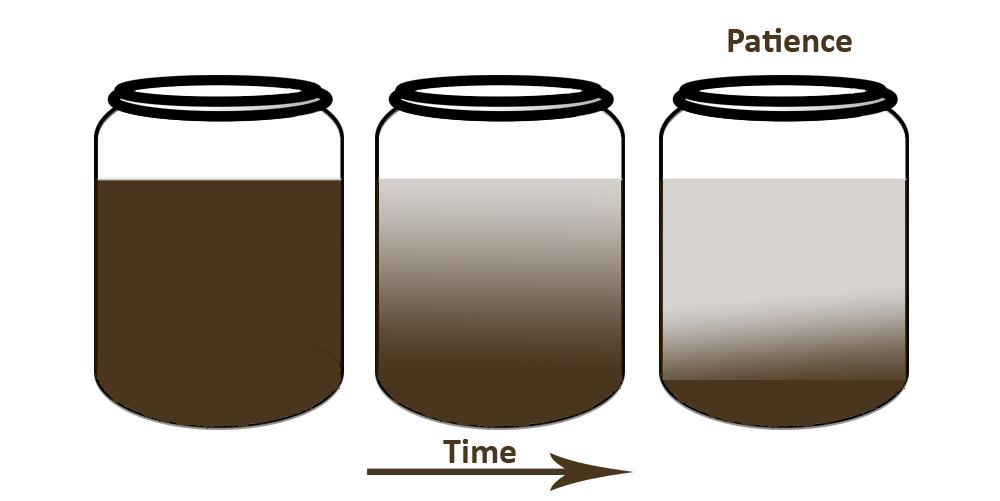
Ultra Fines can take weeks, months and even years to settle out on their own due to their light weight and large surface area.
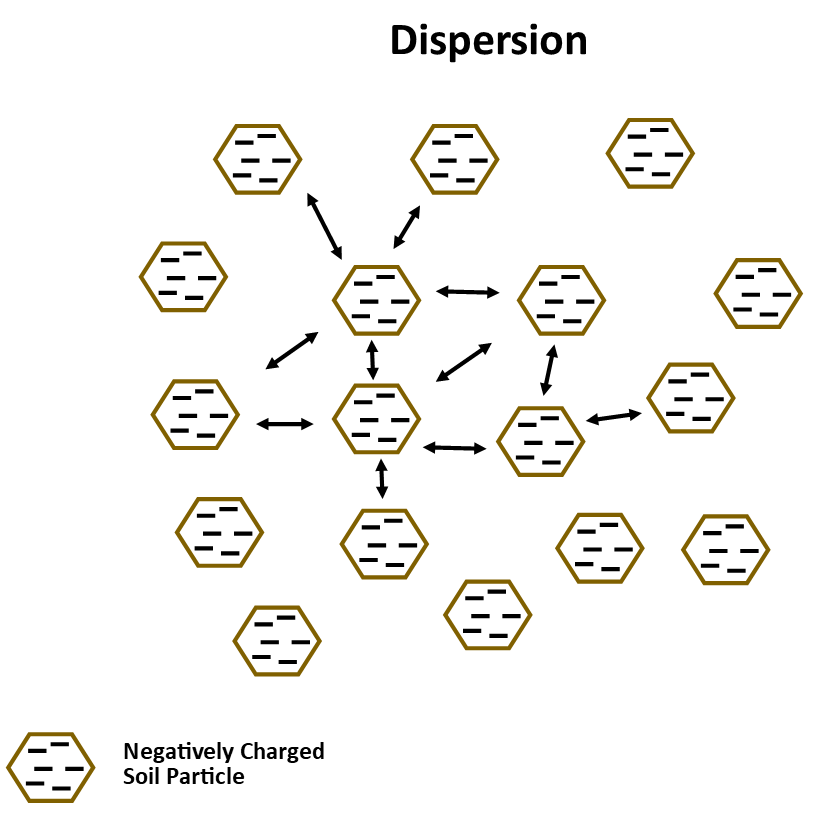
Dispersion
In Hydro Vac Slurry Processing, after the completion of larger material screening, the remaining slurry composition consists mainly of soil, organic matter, water, and potentially some amount of small aggregate material.
Soil particles that are small enough to be suspended in the water will predominantly possess a negative charge and since they have the same type of surface charge, they repel each other when they come close together (dispersion).
As a result, suspended solids will remain in solution, won't clump together, and may never settle out of the water unless chemistry is incorporated into the dewatering process.
Clarification solves this problem ... by bringing together small particles to form larger particles (flocculation)
The mechanism is based on agglomeration of the very small colloidal particles in the water into flocs, which enable settling, hence clarifying the water (Ebeling et al. 2003).
Effective Clarification of Soil and Water Mixtures Will Include The Sequential Orchestration Of The Following Steps …
Coagulation
Flocculation
Agglomeration and Separation
Coagulation and Flocculation allow particle collision and growth of flocs ( the result of small particles coming together to form larger particles). This is then followed by Agglomeration and Separation
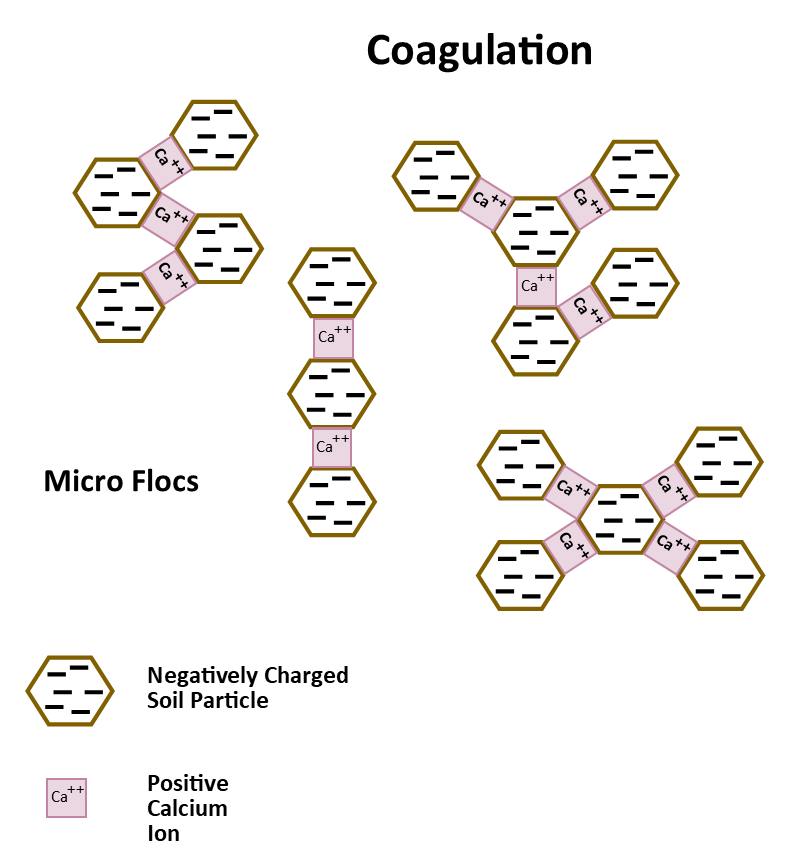
Step #1 - Coagulation
During Coagulation, a positively charged chemical Coagulant is added to the slurry to neutralize the negative electrical charge on suspended solids or colloids (particles in suspension that won't settle out). This destabilizes the forces that keep colloids apart.
The most effective cation coagulant for soil dewatering now come in organic solutions that are low cost, environmentally friendly additives available in bulk form.
Once the charge on the colloids is neutralized, they are capable of sticking together and forming slightly larger particles called microflocs which are not visible to the naked eye.
Turbulent flow, or rapid mixing is required to properly disperse the coagulant and promote the particle collisions that are needed to achieve good initial coagulation.
Turbulent Flow Event #1
- Uniform Dispersion of coagulant into slurry.
- Conditioning soil material to desired particle size.
- Water Circulation is critical for maintaining proper chemistry levels.
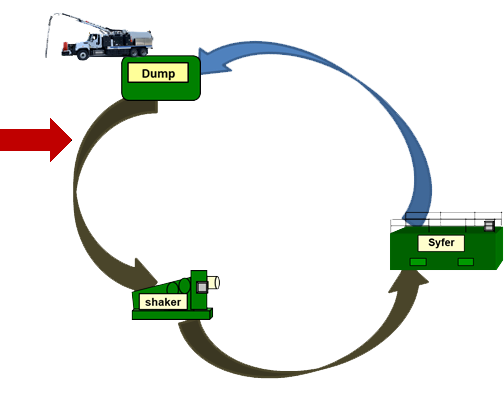
Step #2 - Flocculation
The second stage of chemistry incorporation (Flocculation) begins with the injection of a negatively charged, or ionic, biodegradable polymer.
The ionic polymer is pre-hydrated and conditioned to allow for optimal surface area of the polymer chains.
Anionic polymers frequently give the best bridging action because their polymer chains are more uncoiled and therefore exposed to a greater number of separate particles when added to the water.
They also have high molecular weights which are in keeping with longer chain lengths.
The higher molecular weight contributes to the mass of the formed particle groups or flocs.
Similar to the coagulant, the Anionic Polymer needs to be thoroughly mixed into the slurry.

Turbulent Flow Event #2
- Uniform mixing of hardened water with hydrated polymer to initiate flocculation.
But once mixing is complete, the slurry flow needs to slow and rise to allow the polymer chains to bridge and bind the micro flocs together into larger particle groupings (flocs) that are capable of settling out of the water in the next step of the process.
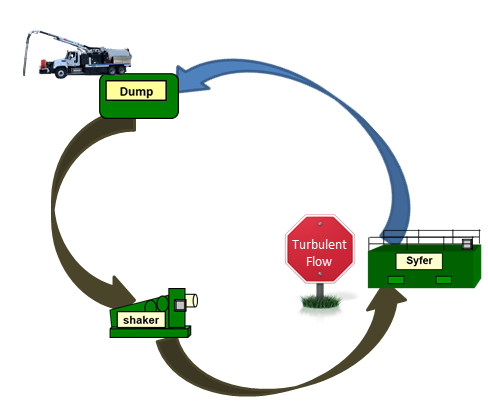
Importance of Minimizing
Turbulent Flow
Minimizing Turbulent Flow also reduces the number of low gravity solids, and the clay particle surface area, that need to be removed from solution.
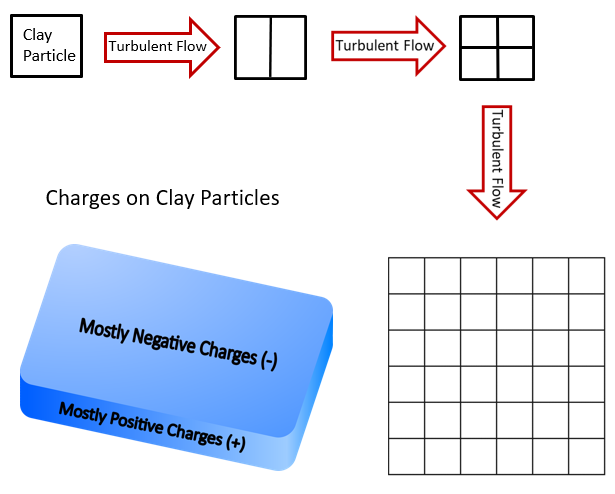
The effectiveness of the Flocculation process is driven by retention or detection time (the amount of time the solution spends in the process), the degree of Laminar flow, and the amount and frequency of vertical rise.
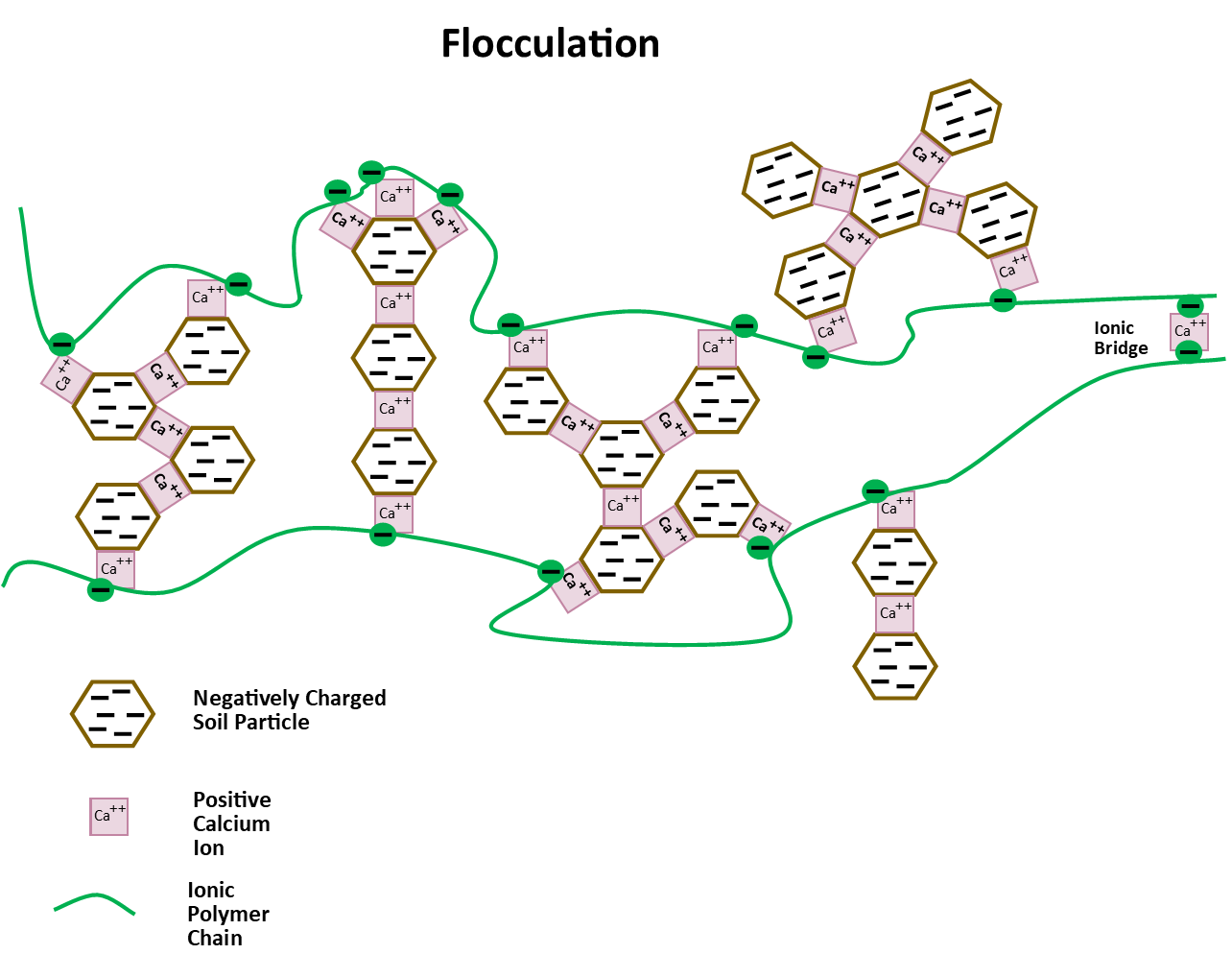
Step #3 - Agglomeration and Separation
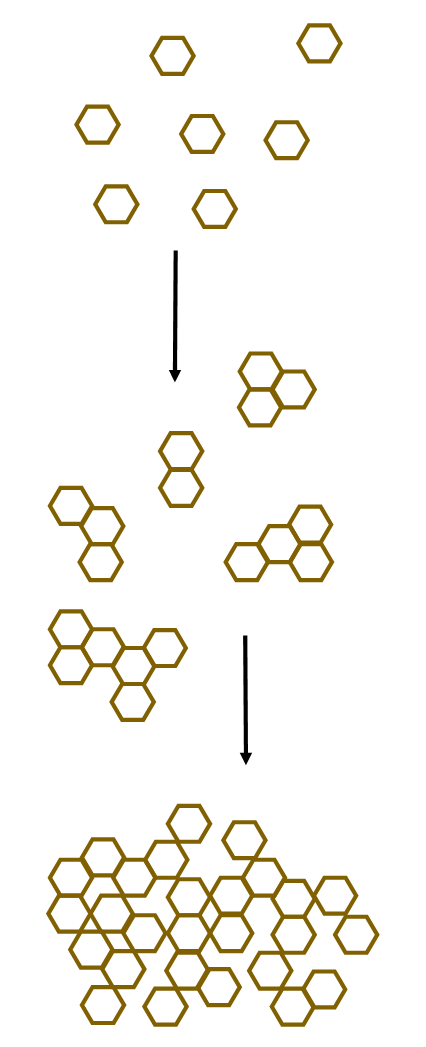
Soil and organic matter have the ability to stick to each other and to other surfaces (agglomerate) which produces larger particles with higher mass.
The force of gravity can more readily cause these larger particles to settle out of a solution as compared to smaller particles with smaller mass.
Coagulation and Flocculation accelerate Agglomeration through the introduction of chemistry to the process flow.
In a mechanical processing system, the goal is to accelerate agglomeration once chemistry is properly added and mixed into the slurry.
During this step, the opportunity exists to both clean the water and dewater the solids
Importance of System Design
For Chemistry To work properly, the active system design needs to provide …
- Water volume for slurry conditioning
- Circulation to maintain water hardness levels.
- Polymer conditioning prior to injection
- Controlled polymer injection.
- Turbulent flow for mixing
- Retention time for flocculation
- Laminar flow for aggolmeration
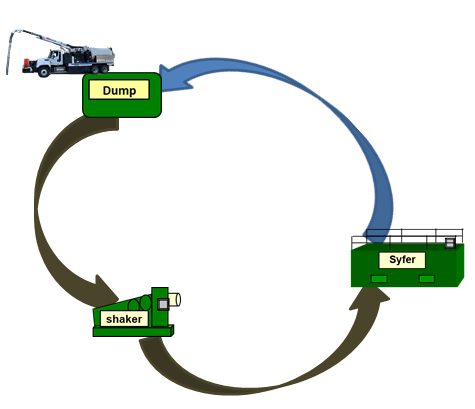
Chemistry Challenges
1. Slurry that is not highly fluid in terms of its ability to freely flow and be easily pumped will have a difficult time effectively incorporating chemistry.
2. Coagulation needs to be completed immediately before Flocculation. Process flows that attempt to do both at the same time, or have too small or too large of a time gap between Coagulation and Flocculation, are typically less effective.
3. A lack of proper polymer conditioning prior to injection into the slurry will result in poor uncoiling and shearing of the polymer chains, reducing the polymer's overall surface area and exposure to a greater number of separate particles.
4. Adding too much polymer to the slurry will create an undesirable haze or film in the water that can negatively impact re-use of the water outside of the system, and "blind screens" if the cleaned water is re-used inside the system. The haze or “mud” that is generated from too much polymer would then have to be diluted or changed out completely.
5.Too little properly conditioned polymer added to the slurry will produce less effective flocculation and, therefore, a higher level of suspended solids will remain in the cleaned water.
6.Excessive Turbulent flow will further breakdown the suspended solids into smaller particles with smaller mass, making it more difficult for them to settle out.
7.Short retention time in the process will reduce the overall level of Agglomeration that can be achieved with proper Coagulation and Flocculation.
8.Effectively cleaning water and drying solids at the same time is an enormous challenge for most mechanical systems.
Chemistry Challenges With
Centrifuge Processing System Design

Water volume for slurry conditioning (Limited)
Circulation to maintain water hardness levels (Limited)
Turbulent Flow For Proper Mixing (Limited)
Minimization of Turbulent Flow (Limited)
Retention Time For Coagulation (Limited)
Retention Time For Flocculation (Limited)
Laminar Flow For Agglomeration (Limited)
